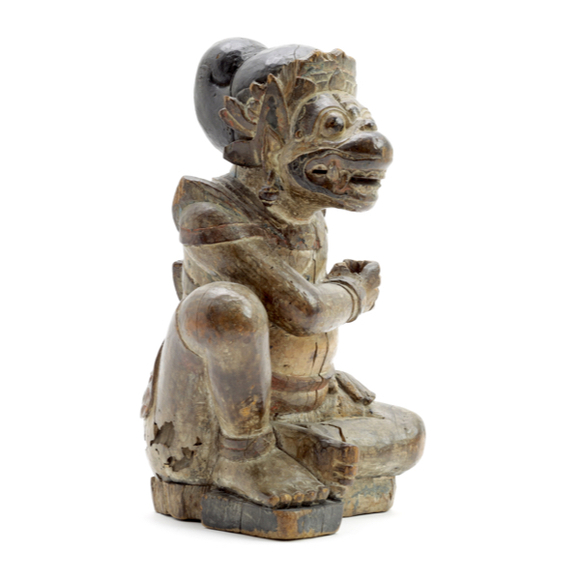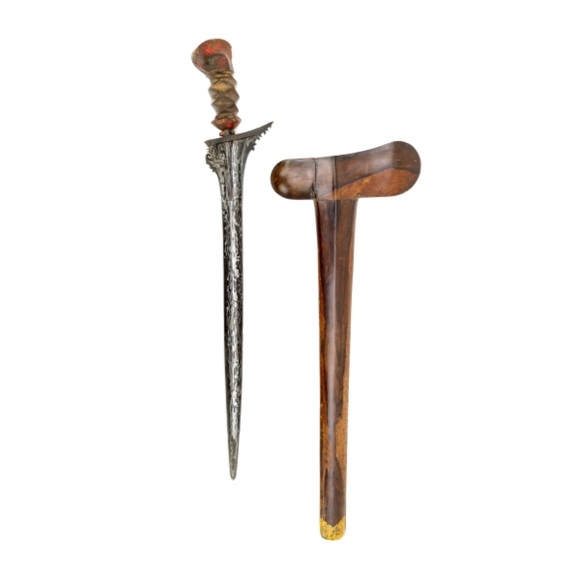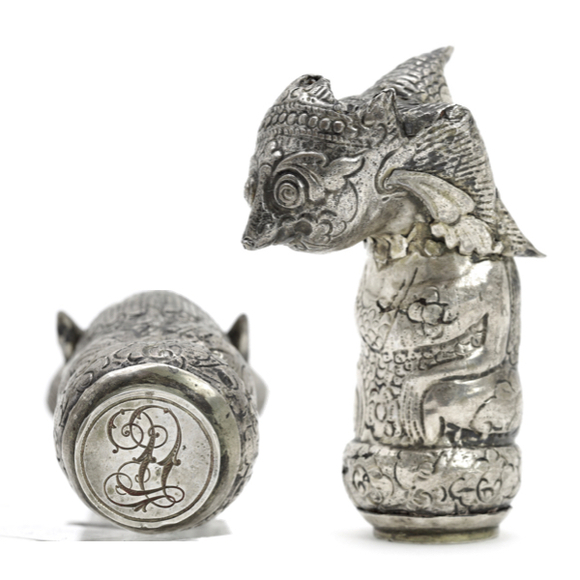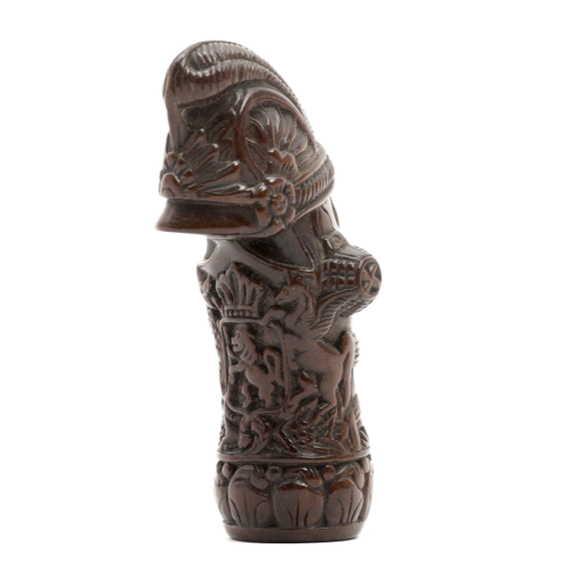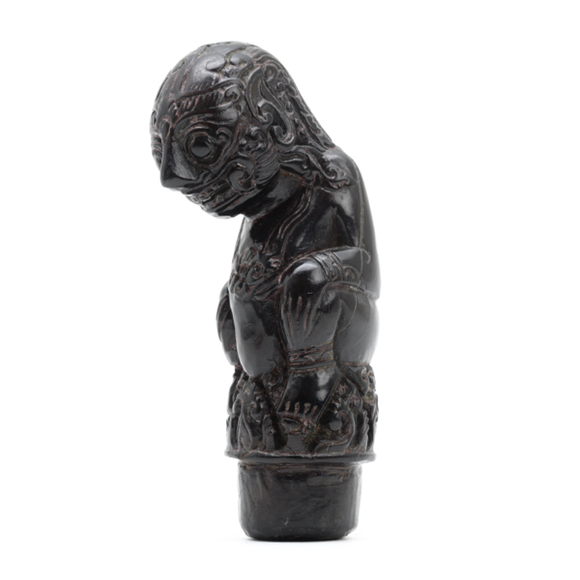A charming Balinese keris holder in the form of Hanuman, the brave monkey king.
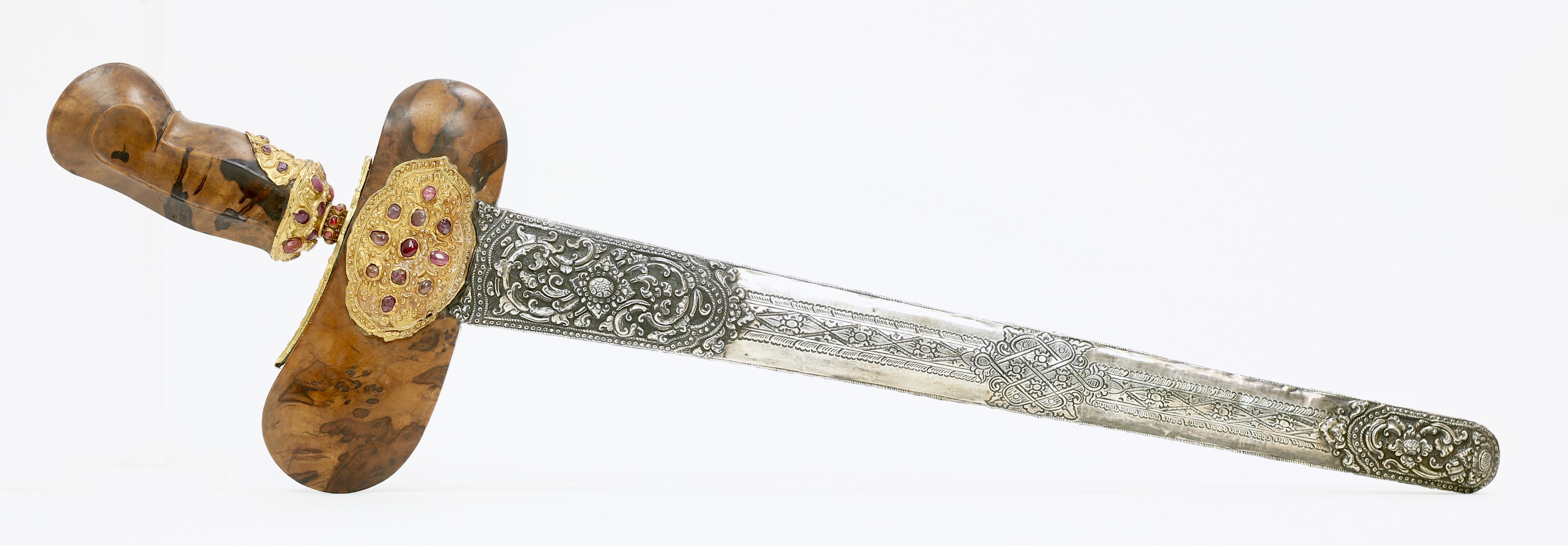
Sheathed 63.2 cm
Dagger 54.2 cm
41 cm
base 14 mm
middle 5.5 mm
near tip 4 mm
base 97.5 mm
middle 26 mm
middle 16 mm
413 grams
Bali, Indonesia
Iron, steel, gold, silver, wood, precious stones.
Blade possibly 18th century
Mounting 19th century,
Golden decor probably early 20th century
From the collection of Jørgen Helmuth Christensen
Introduction
The keris is a distinctive dagger that is peculiar to the Malay archipelago, Indonesia in particular. The keris is surrounded in mysticism, and are believed to have a mystical presence that can be either benevolent or malevolent to its owner or whoever wields it. It is still part of the formal attire of Javanese and Balinese men among special occasions.
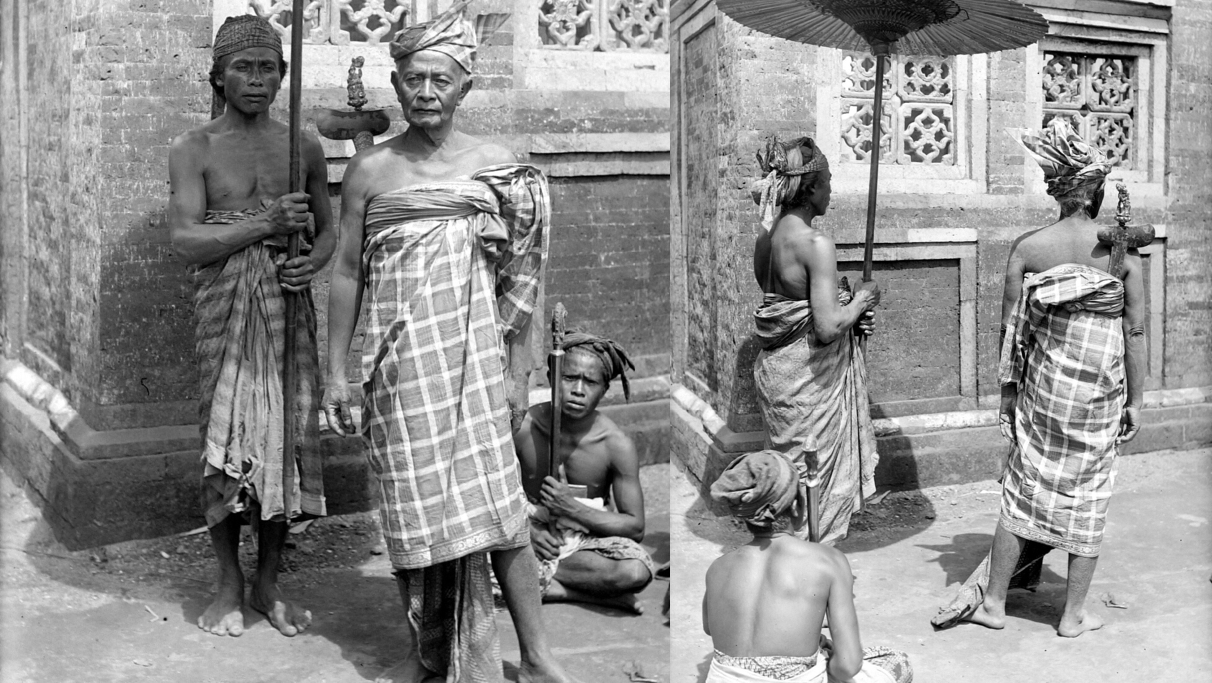
A Balinese gentleman of considerable status, and his retinue.
Notice the typical Balinese mode of carrying the keris on one's back.
Circa 1910-1925. Tropenmuseum Collection.
Description
A large Balinese keris with undulating bilah blade, called "11 luk" referring to the number of cavities in its profile. It has a beautiful and fine pamor (blade pattern) of contrasting layers of iron and steel of different composition. Blade geometry on kerisses can be wonderfully complex and this one is no exception, with sunken panels and double grooves at the base all rendered in such a naturalistic way that it almost gives the impression that it grew this way from a plant. The base of the blade is covered with gold plating, finely worked in repoussé and chased to further detail.
The hulu (hilt) is made of timaha wood (Kleinhovia hospita L), from a tree locally called purnama sadha in Bali. It is characterized by beautiful dark brown stains called pelet, an effect called caused by a fungal growth in the wood. This particular wood was highly prized in Indonesia for keris handles and scabbards and was believed to be possessed by a spirit who shows its presence through the dark brown patterns. The base of the hulu is covered with gold sheet, with precious stones in different shades of red and pink.
The sarungan (scabbard) is made of the same timaha wood, with a wranka gajaman (large kidney shaped mouthpiece) and slender sarung (the actual scabbard). The wood on the sarung has nice, even pelet. The bottom part seems a repair, but a piece of wood was used that was close to the original. The scabbard is clad in silver, completely covered on one side, worked in repousse, in fairly high relief with geometric and floral motifs. On the front of the wranka is an additional plaque of gold, attached to the scabbard with resin and beset with a variety of red and pink semi-precious stones.
Dating
The keris is believed to date from the 19th century, with a possibly older blade. The golden decoration is most likely a later addition, opinions vary on when but it was most likely done in the early to the mid 20th century.
Conclusion
A nice example of a Balinese keris embellished with quality materials and of good workmanship.
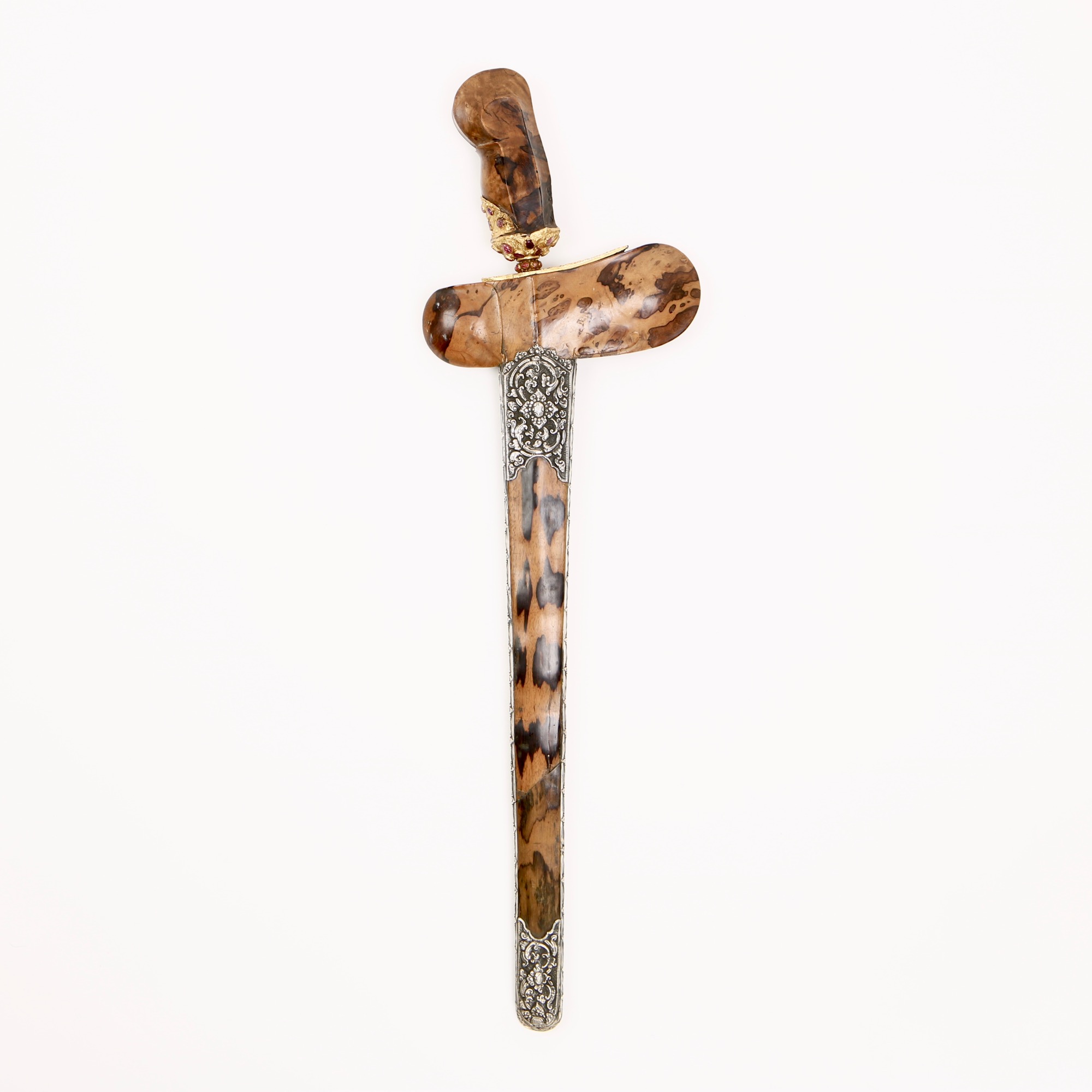
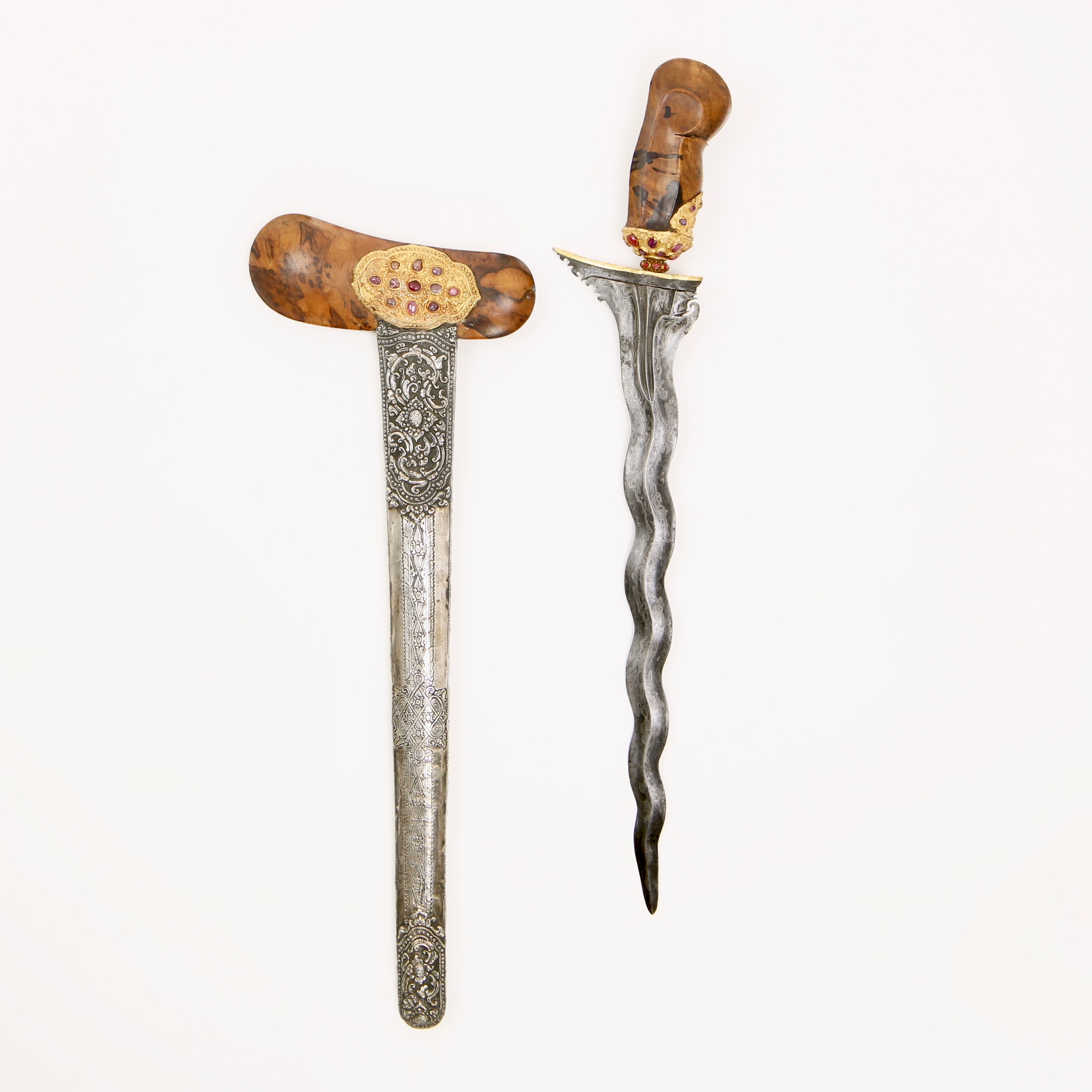
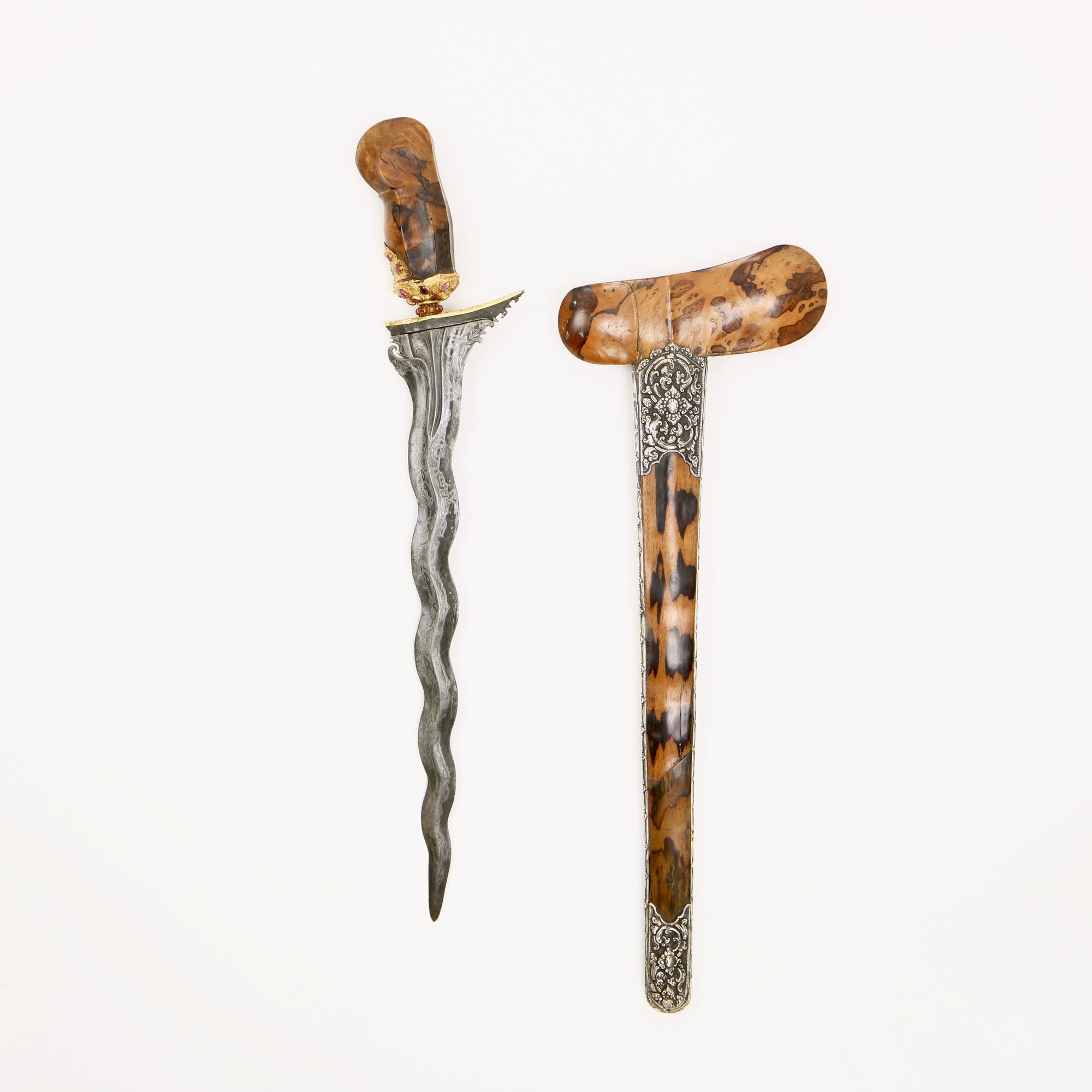
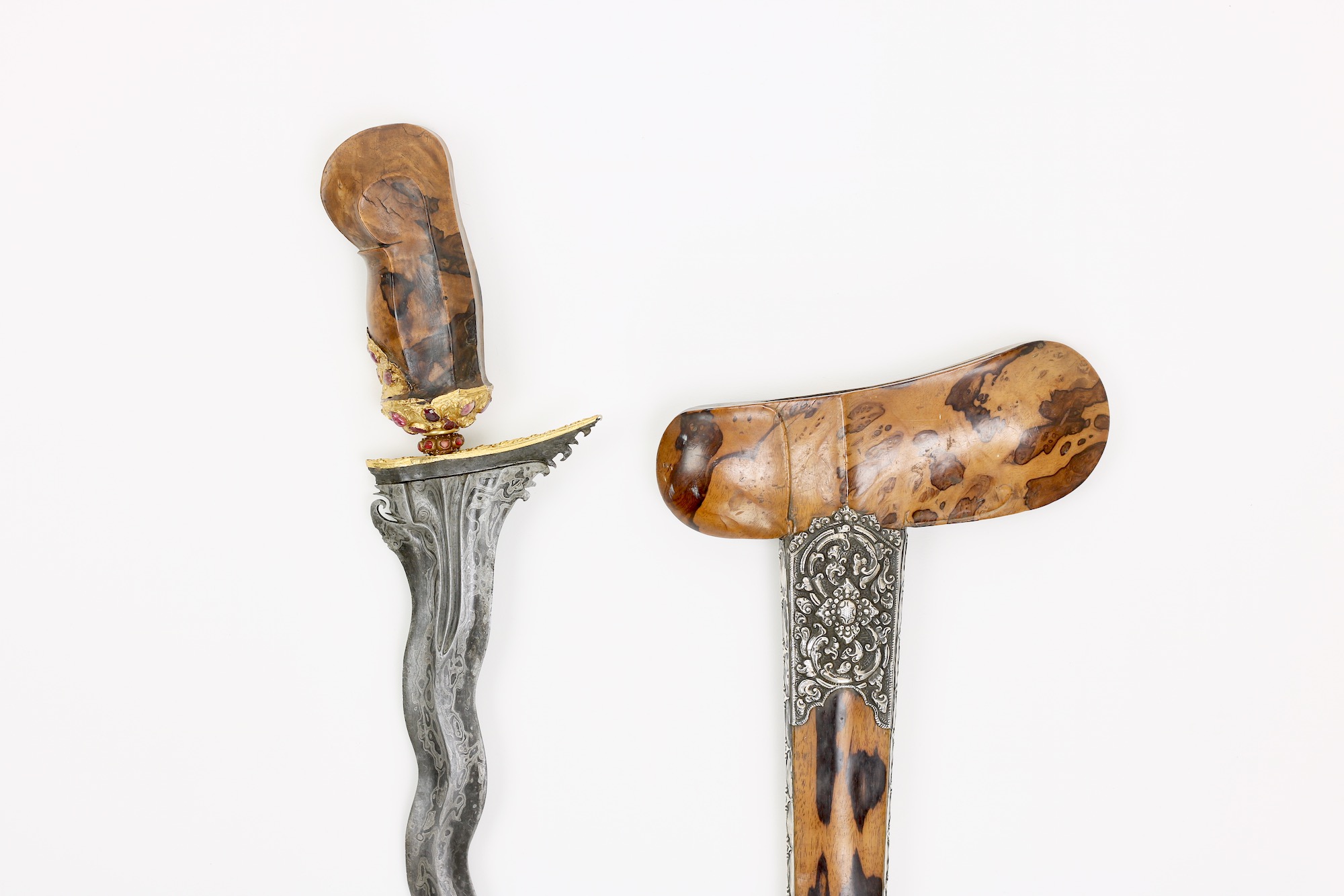
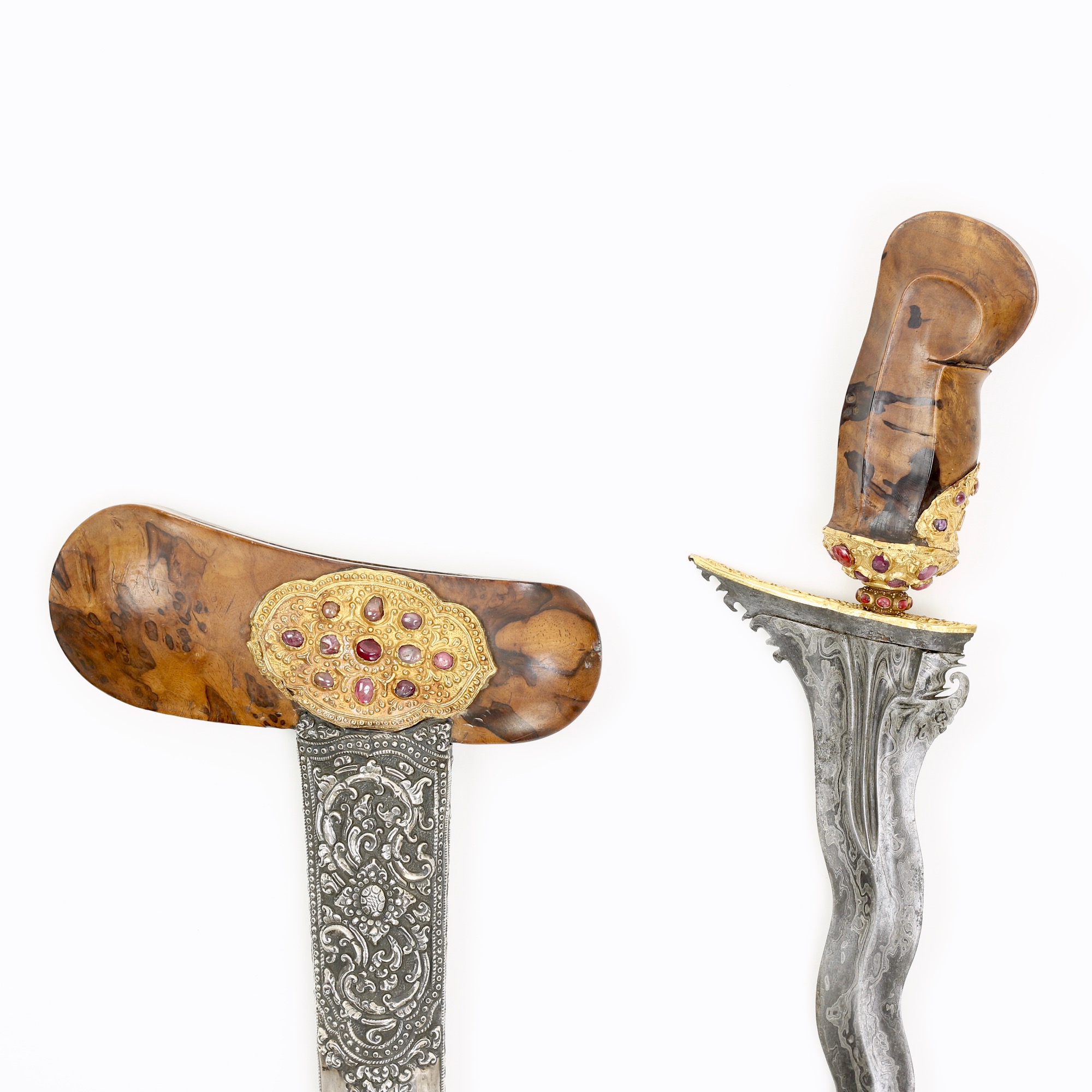
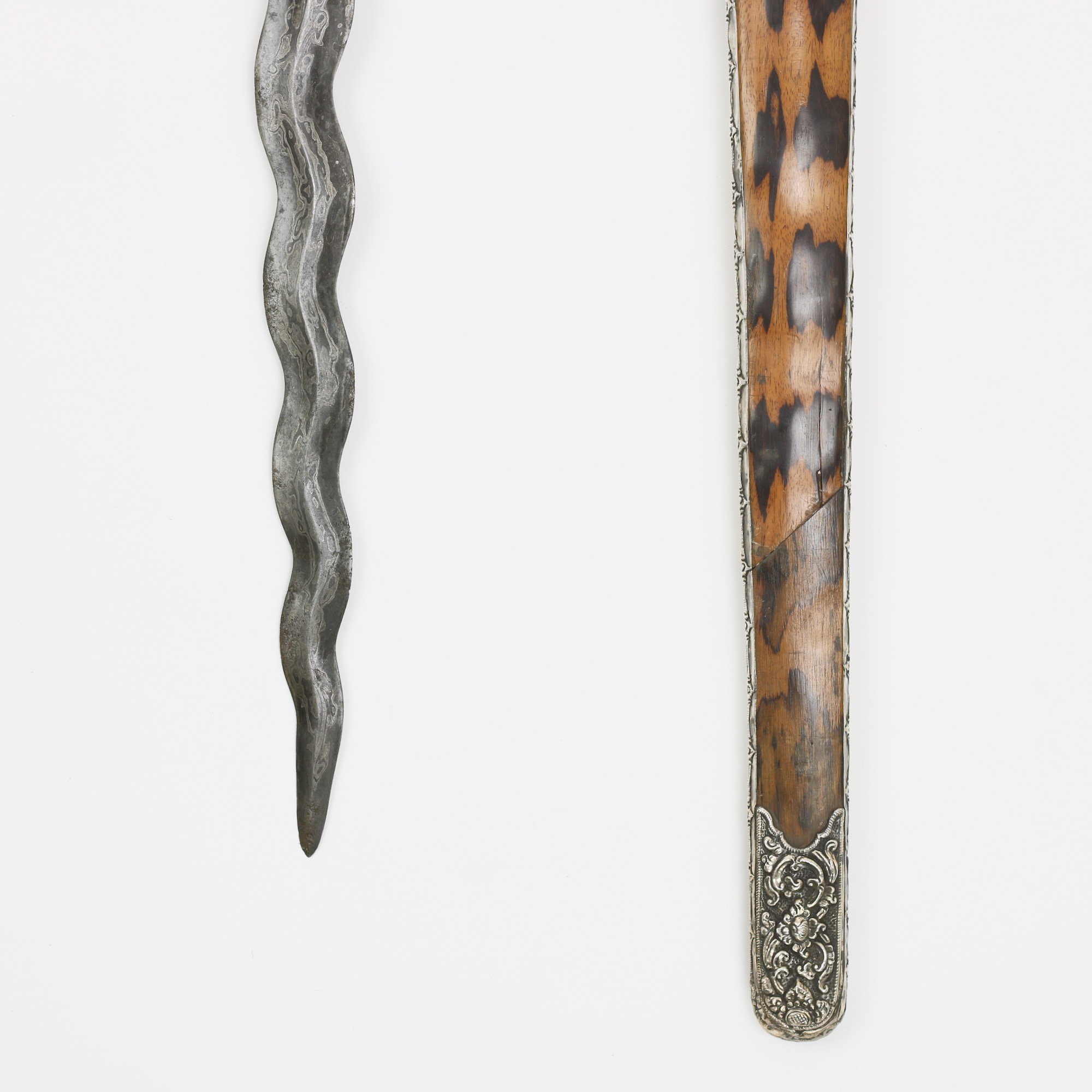
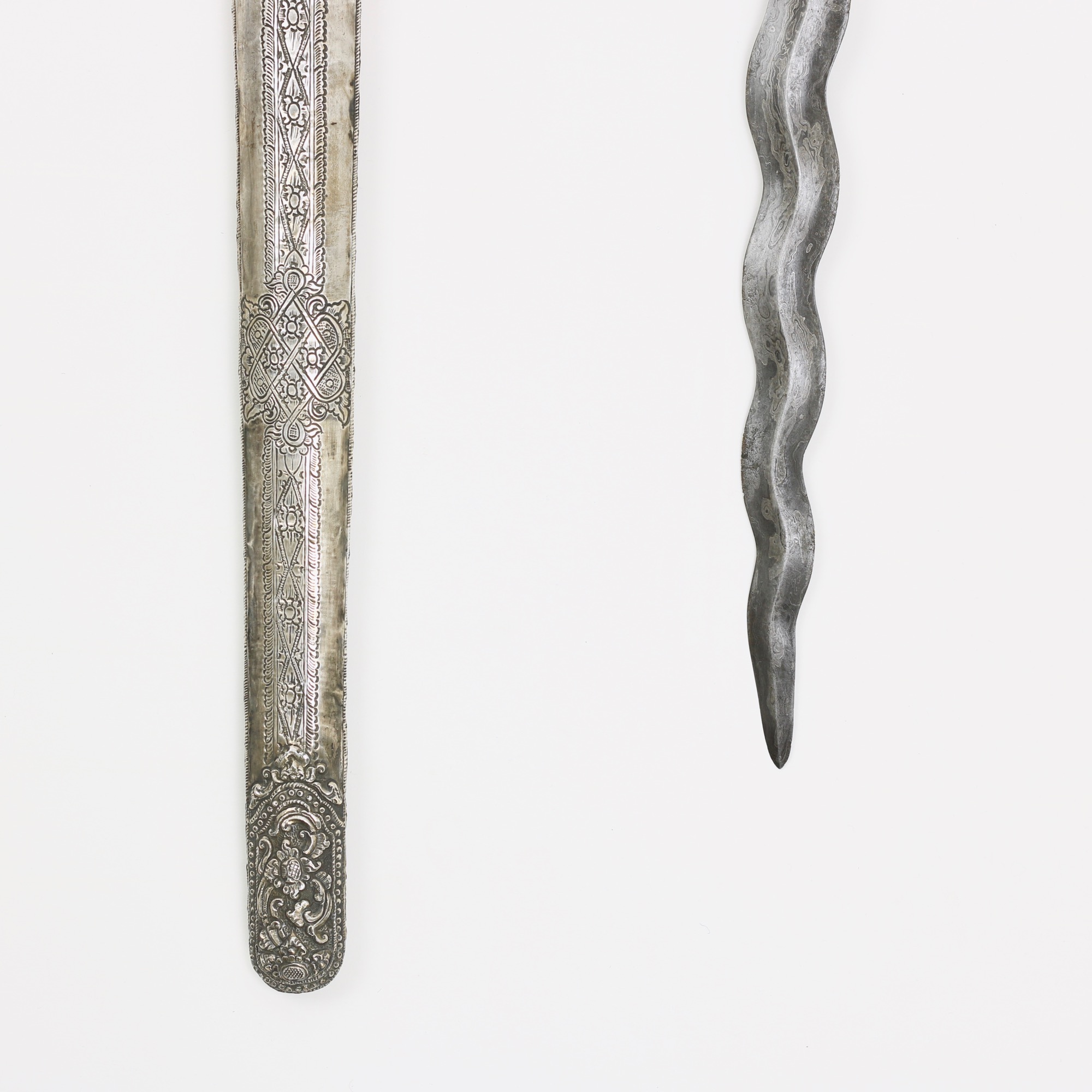



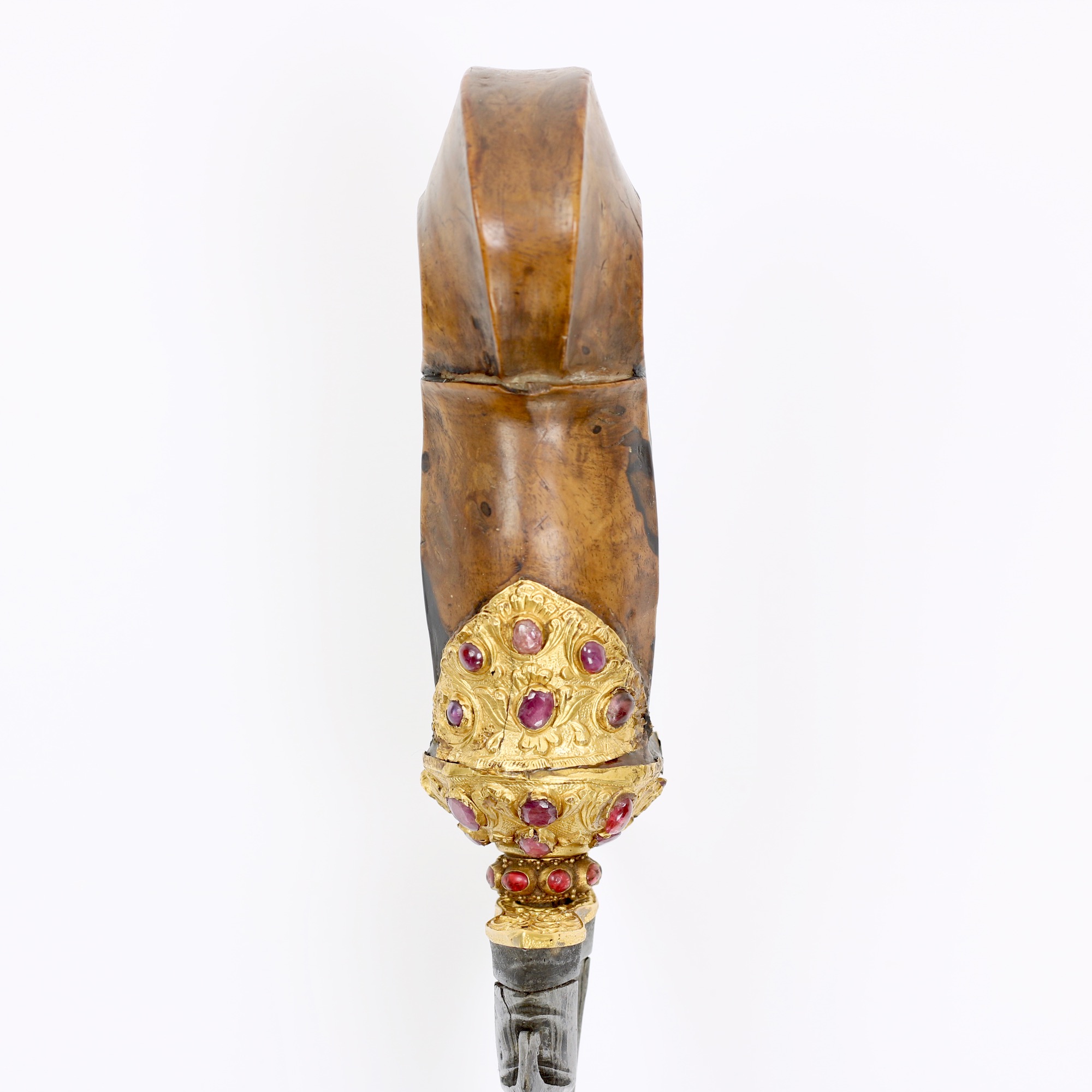
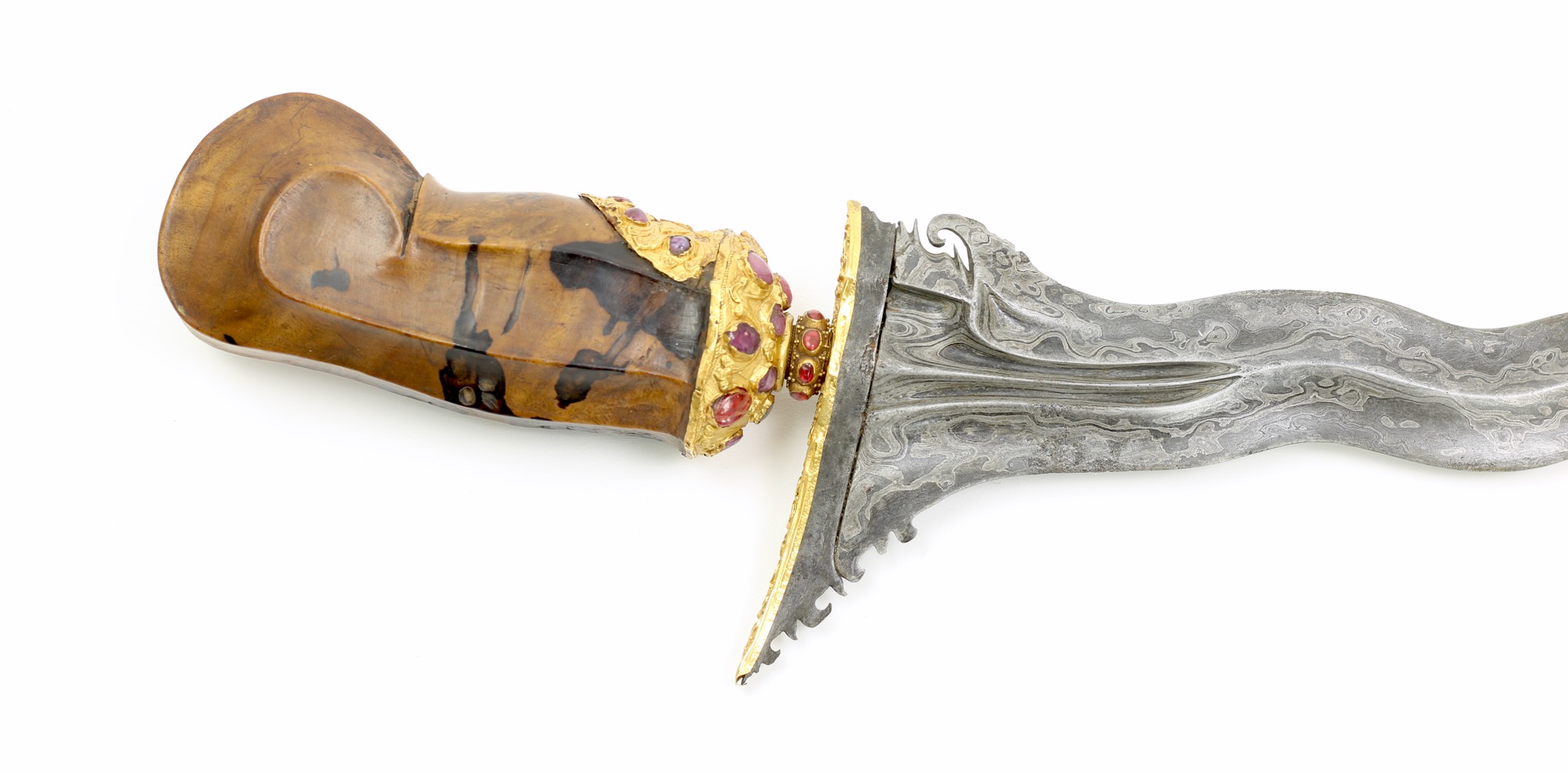

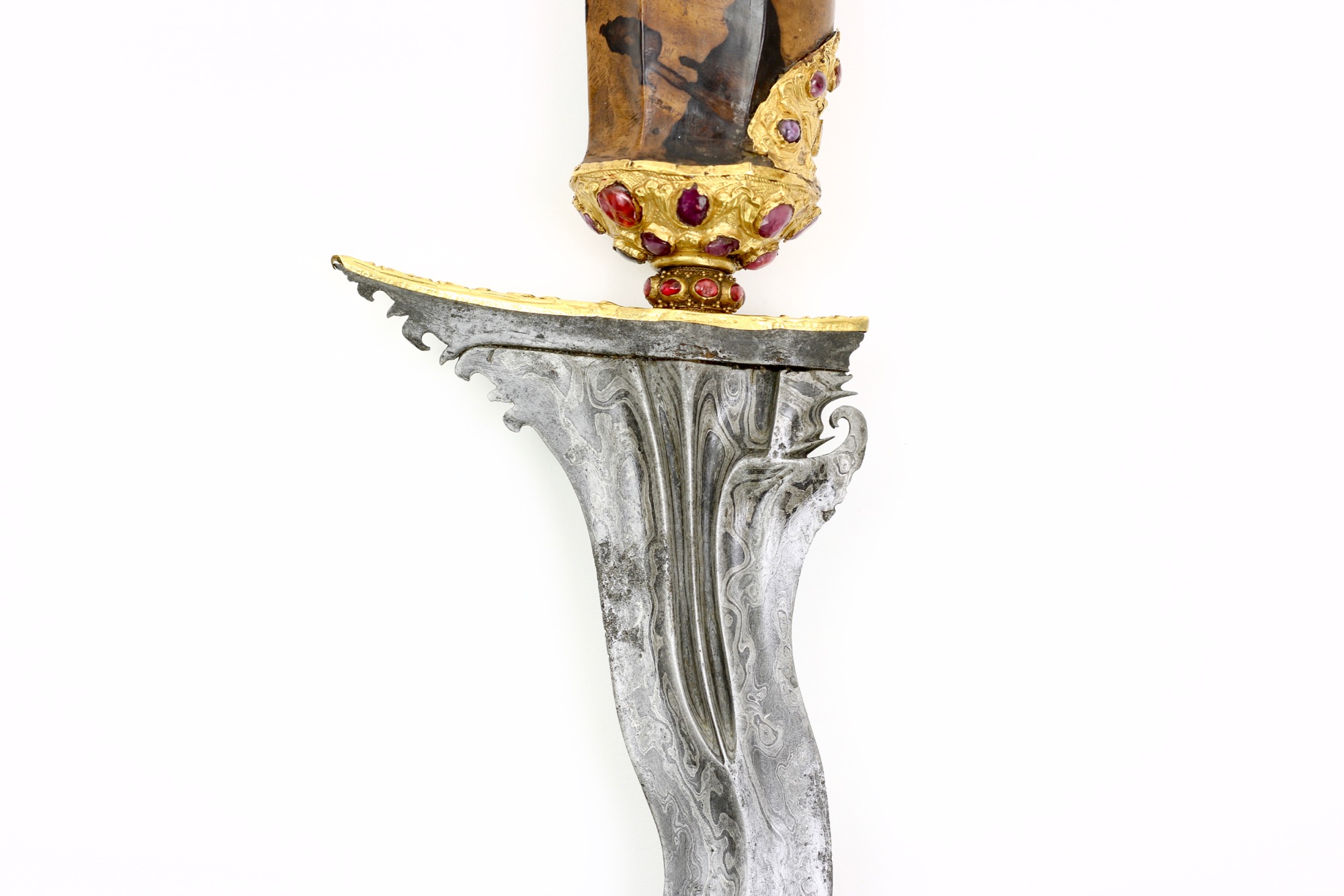
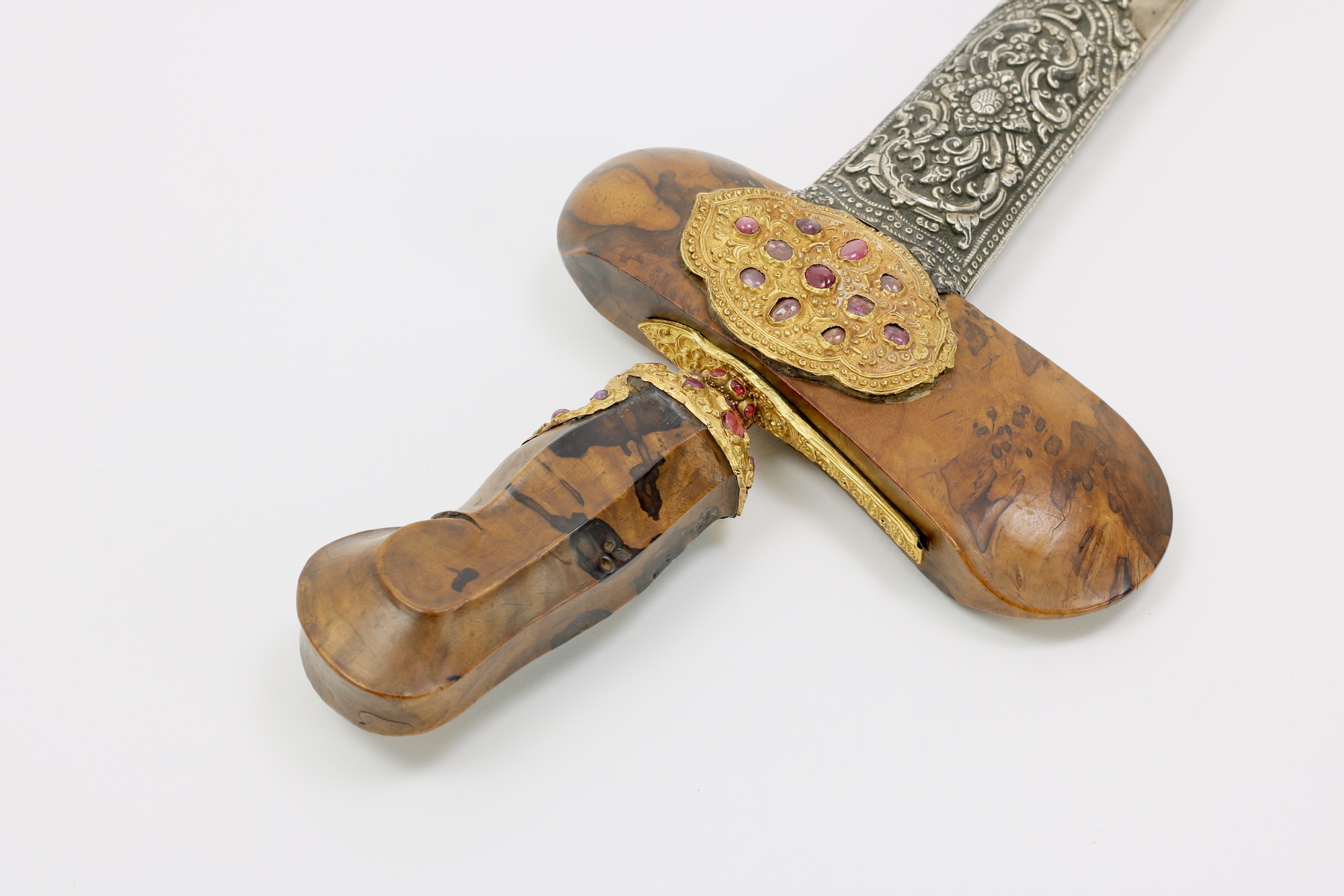
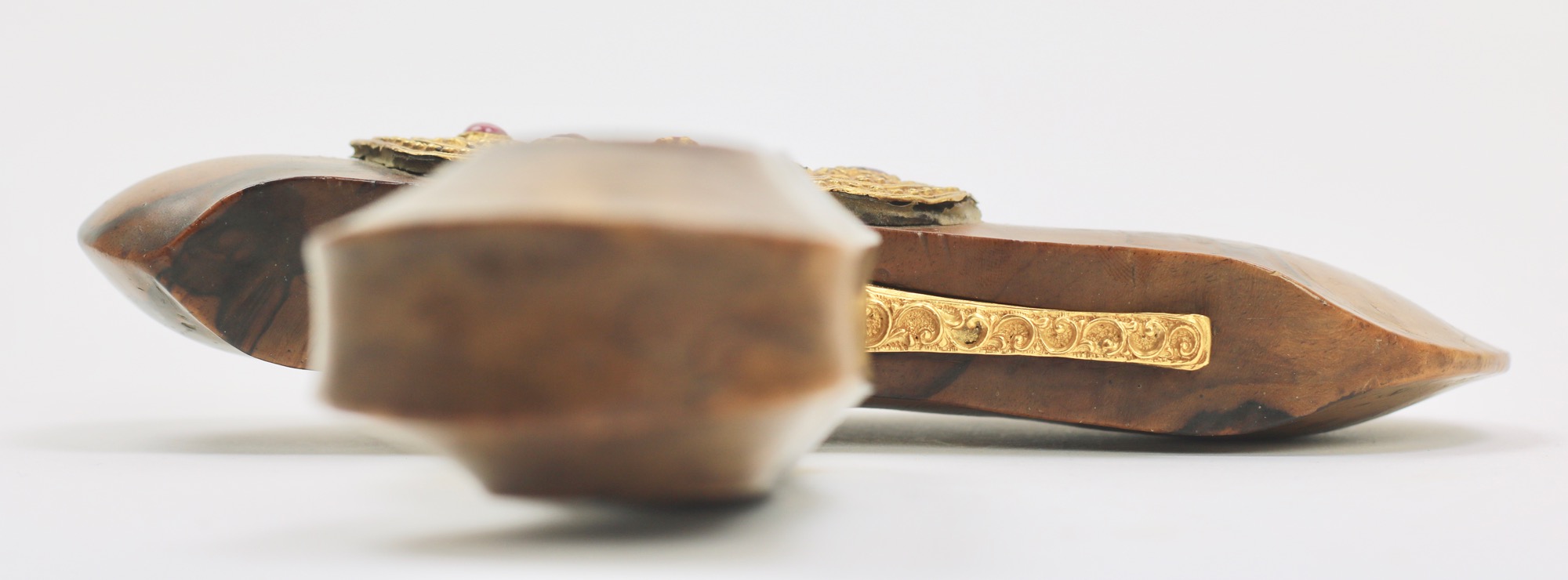
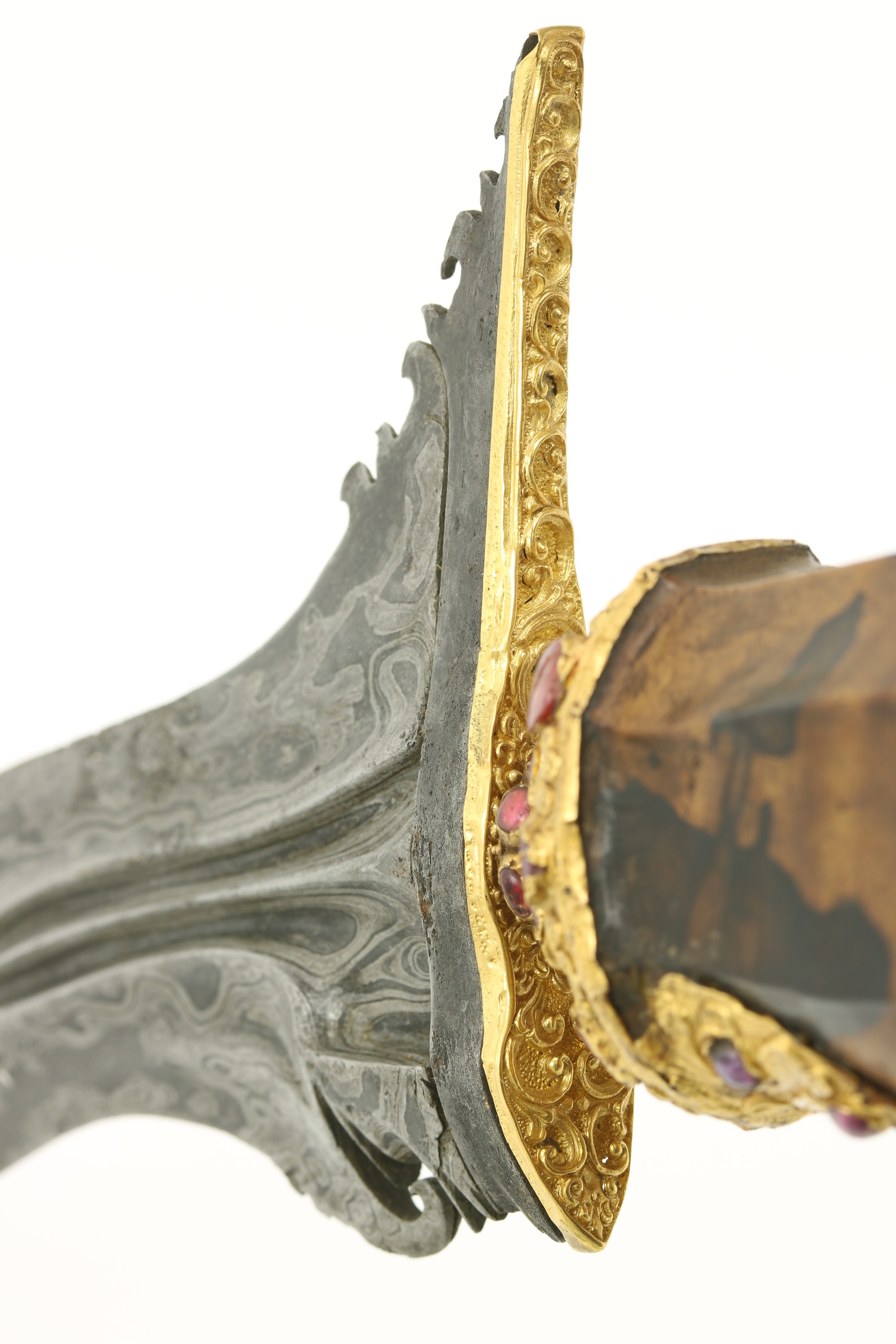
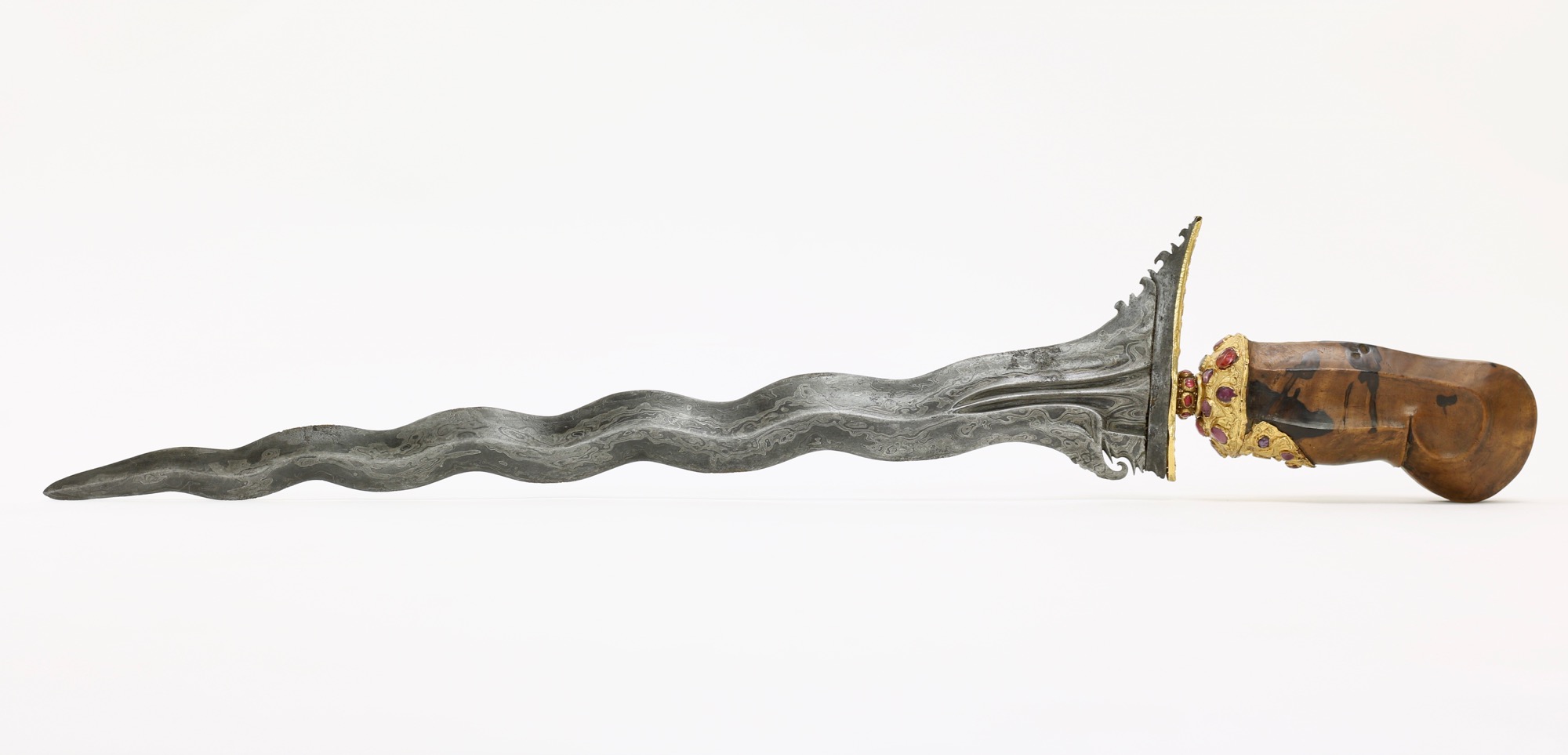
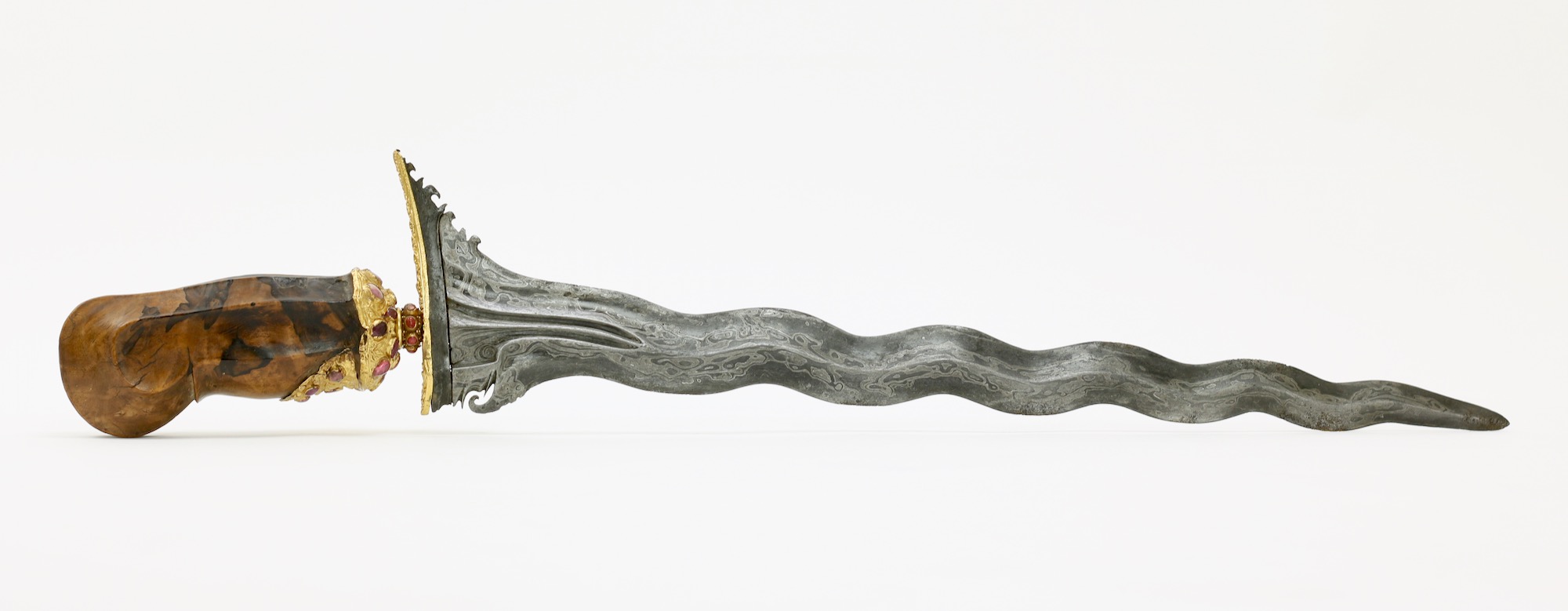
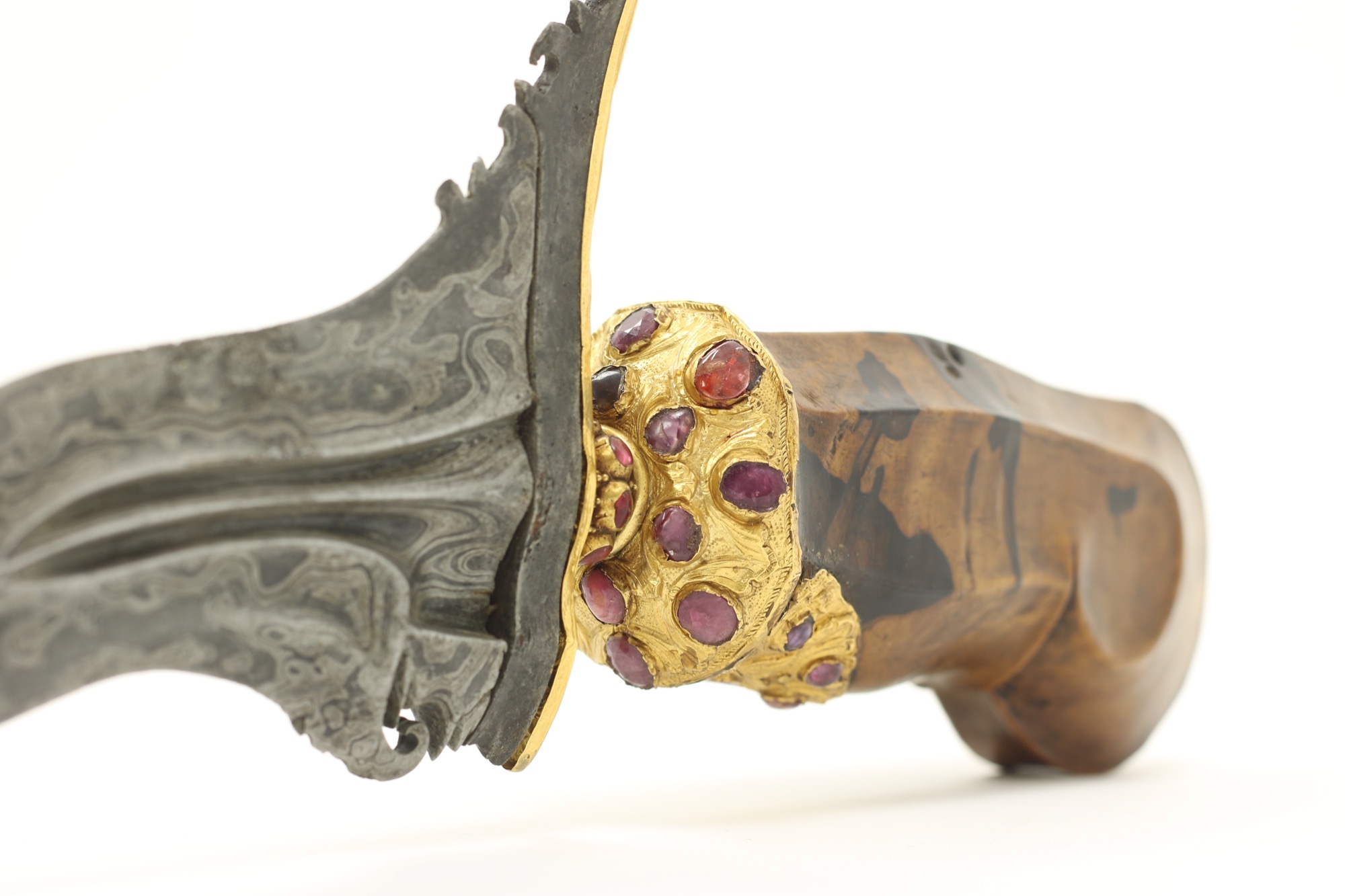
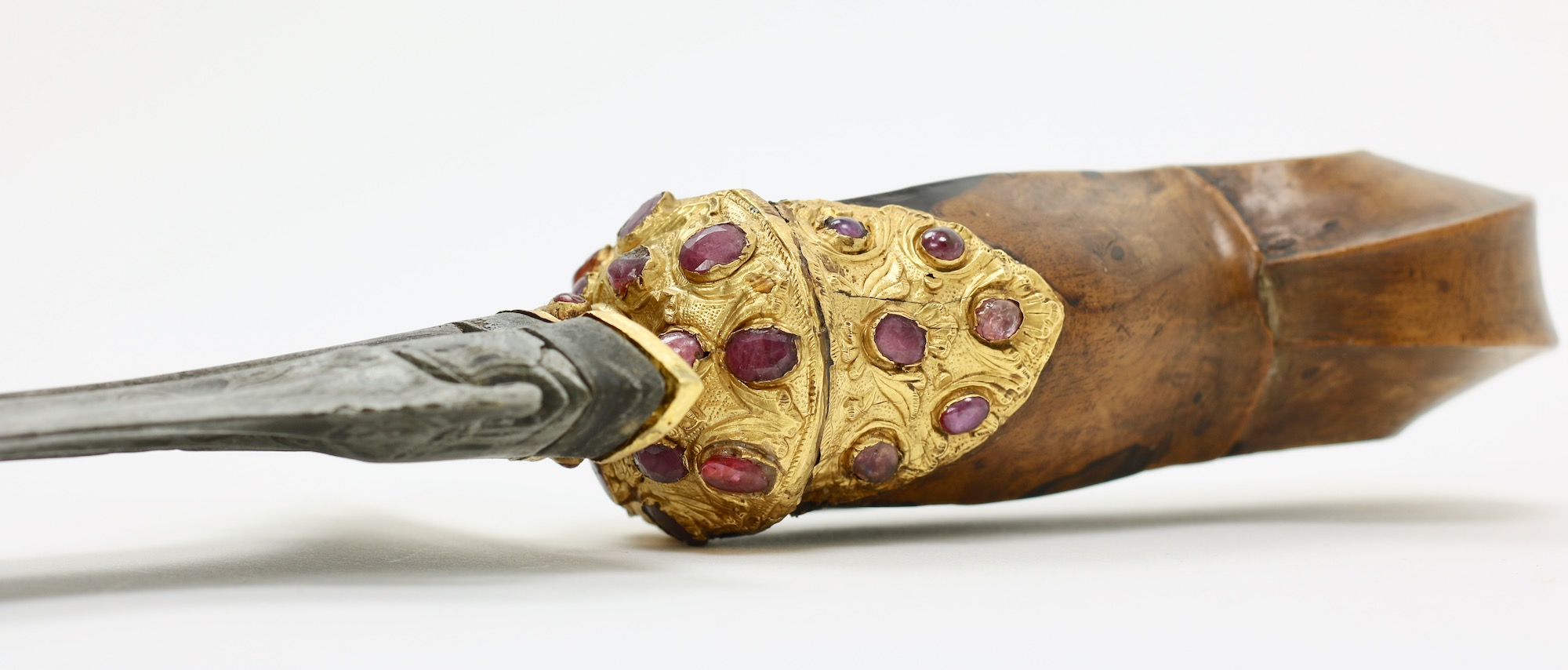
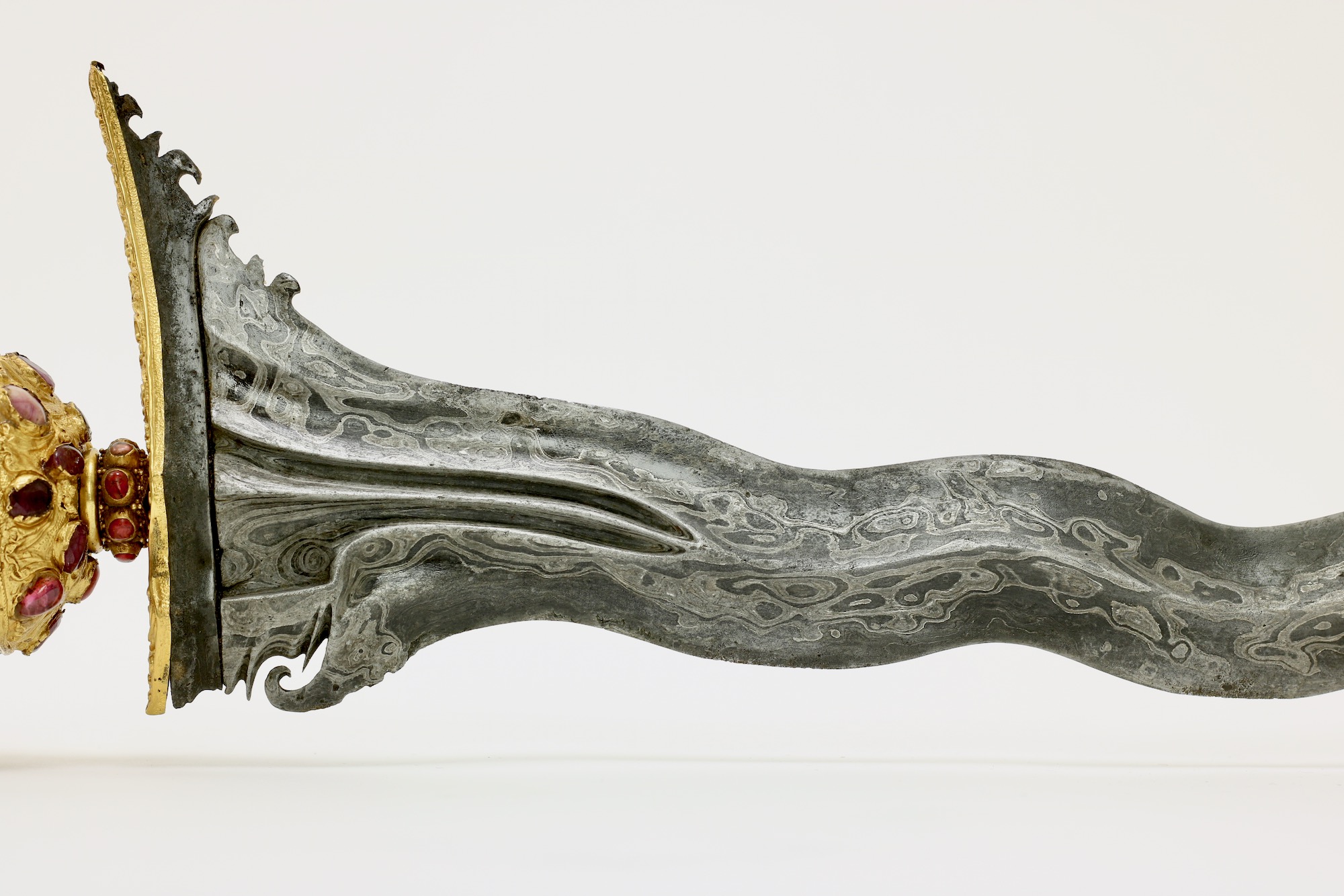
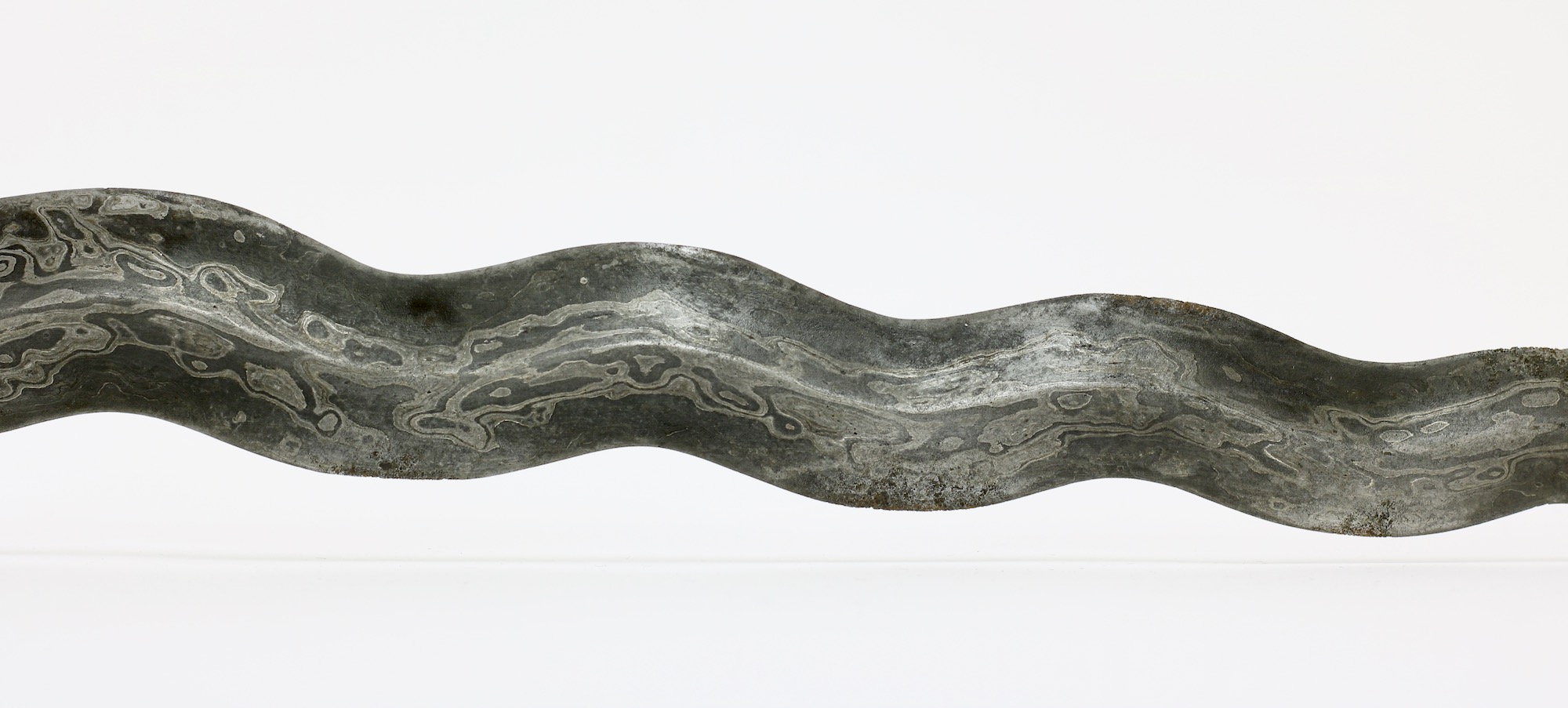
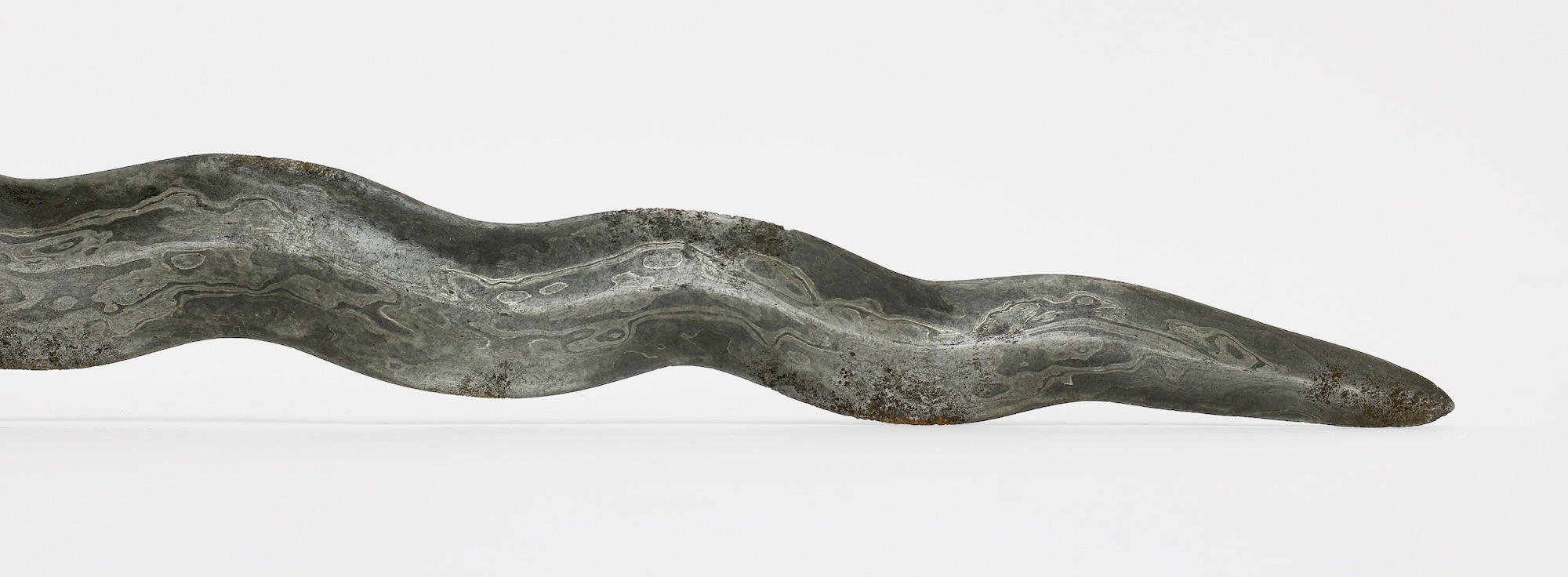
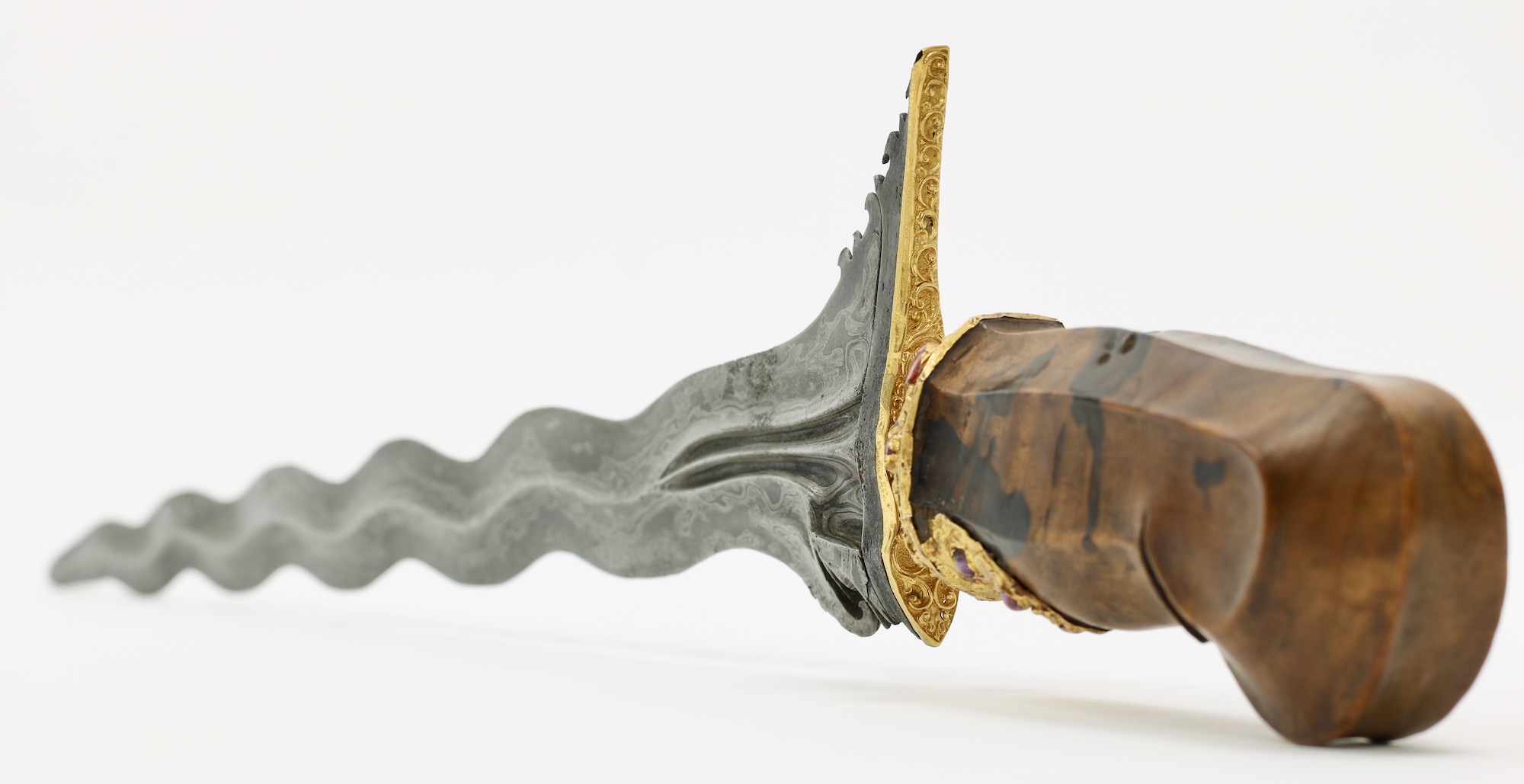
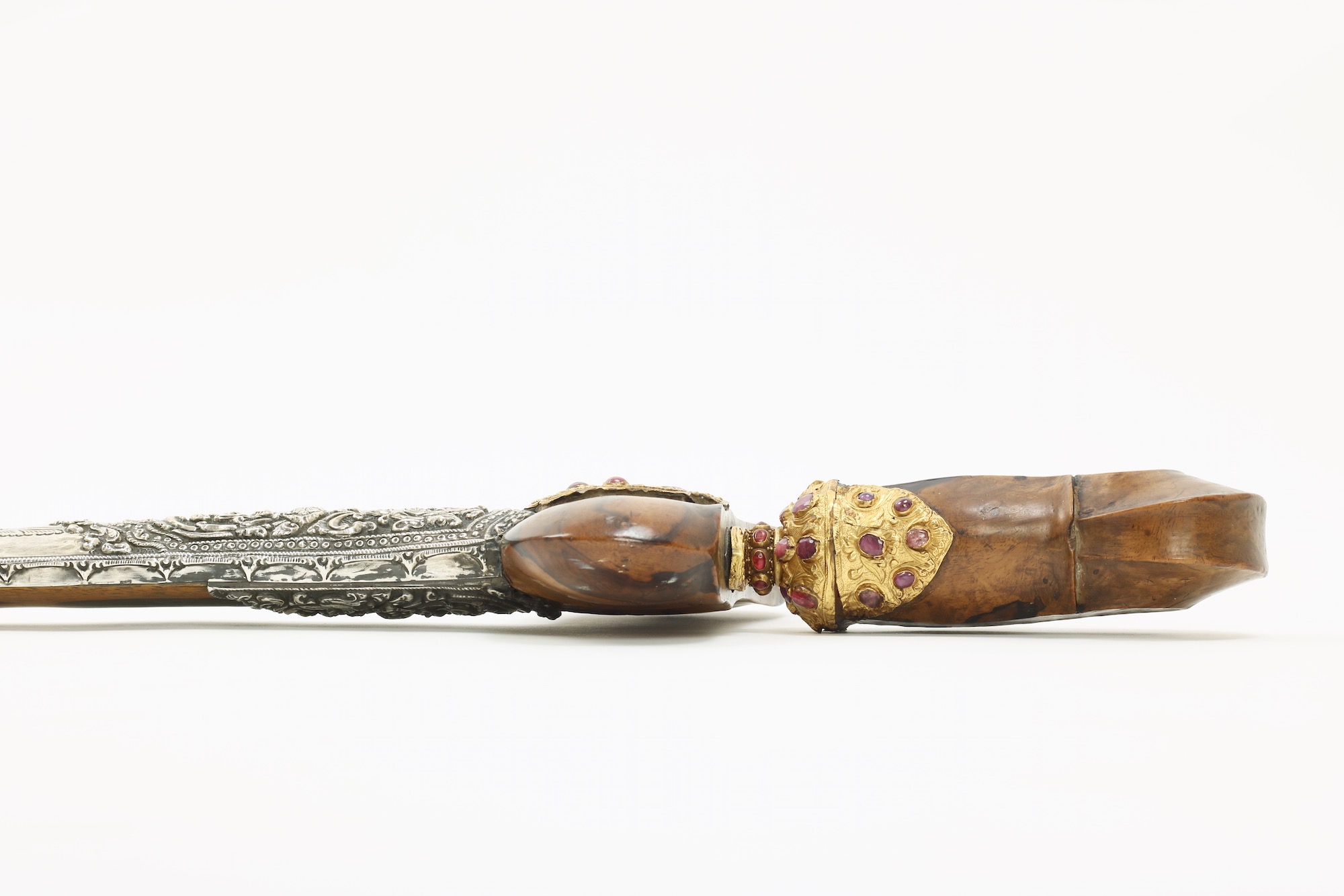
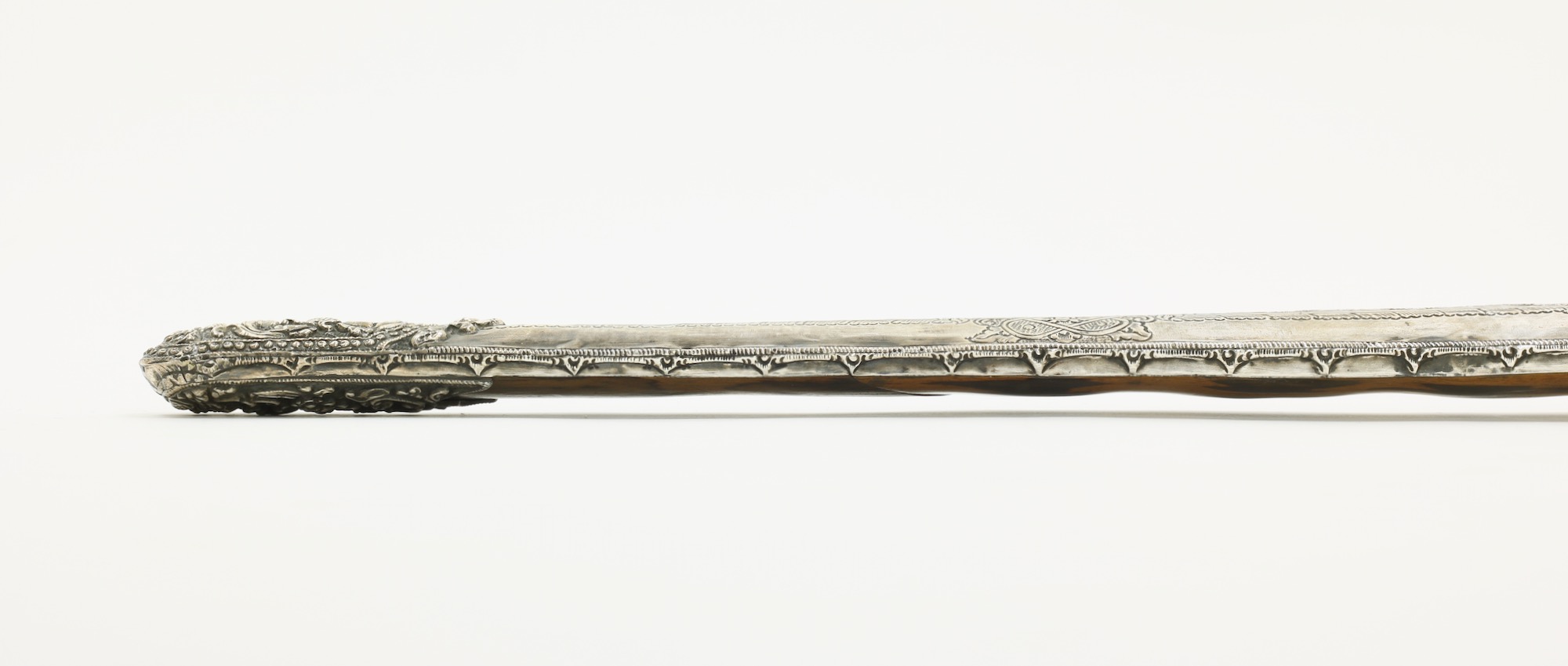
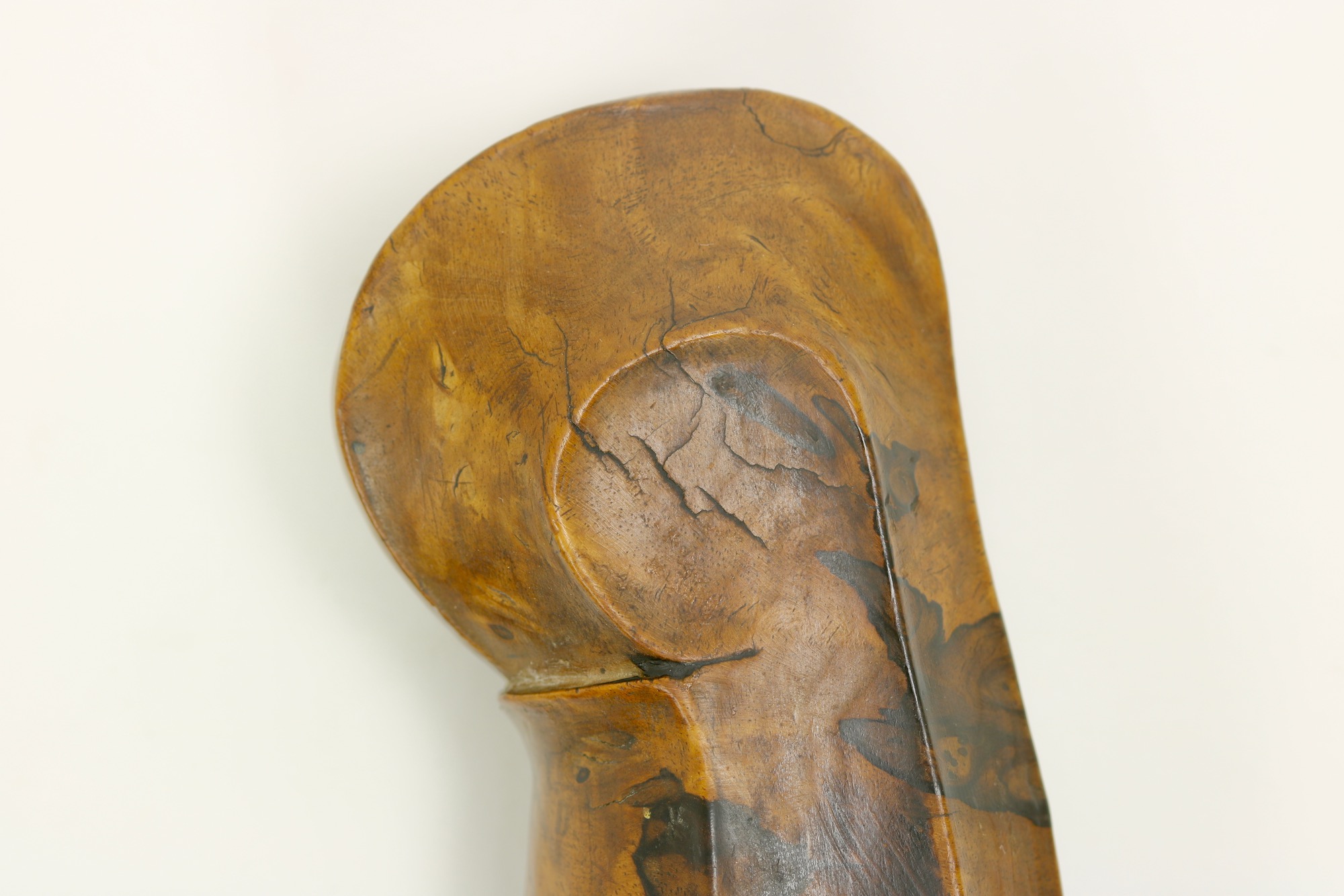
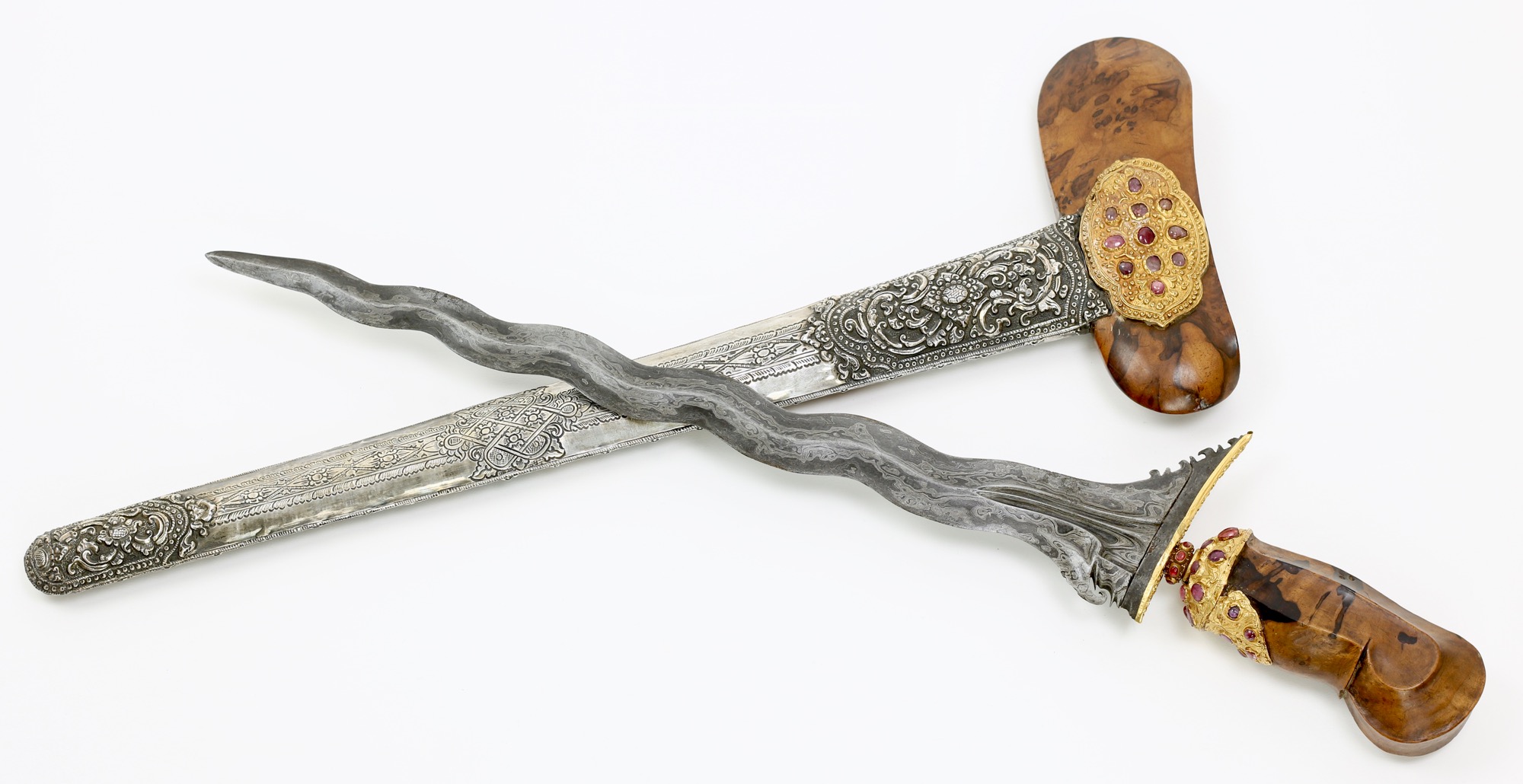
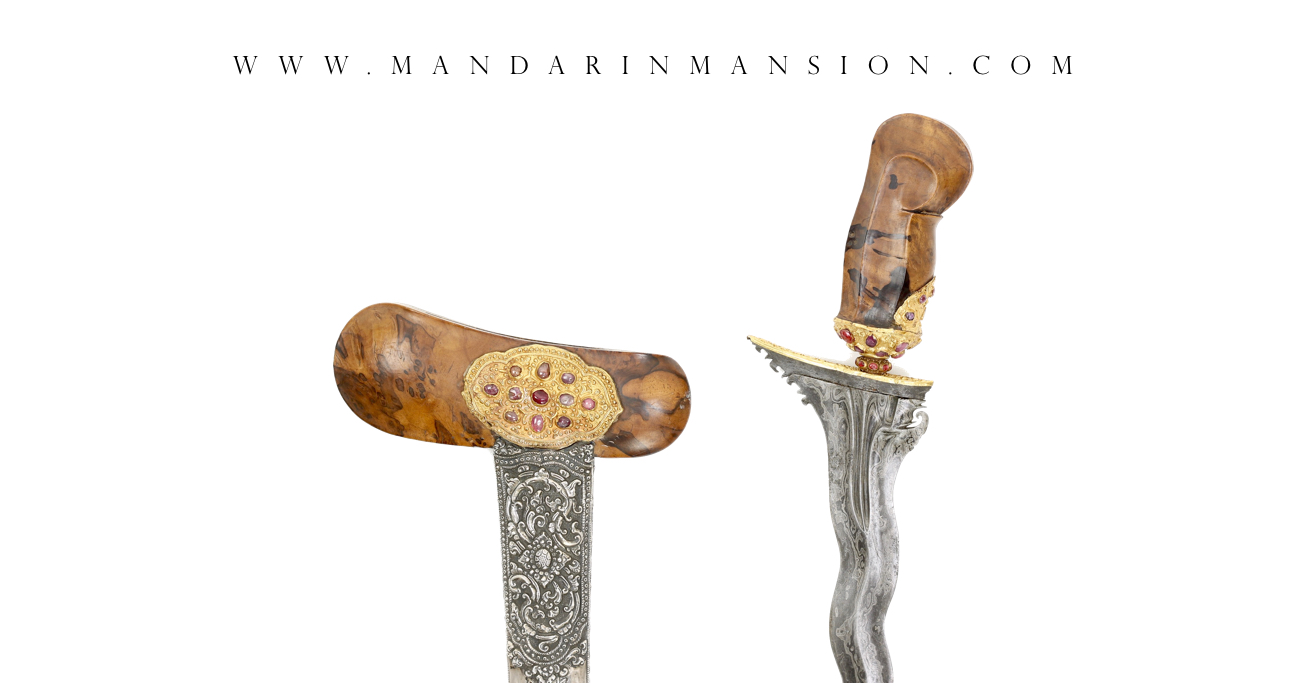
A Madurese keris hilt, carved from dark hardwood in the form of a Dutch cuirassier.

